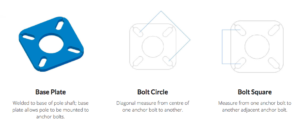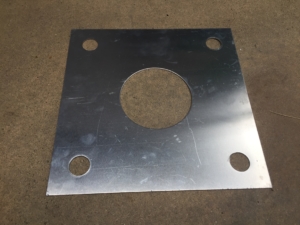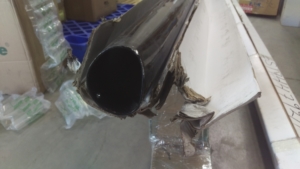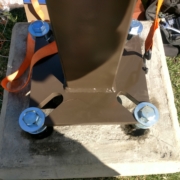Light poles have become a source of pain for many in the electrical industry. We get calls from every level of the supply chain (manufactures, distributors, contractors, property managers, and owners). Most of which can be traced back to the following three issues.
1) The base plate of the new light pole does not match the bolt pattern of the anchor bolts in the concrete.
- Assuming that all similar sized poles have the same bolt pattern.
- This is common when replacing poles on an older property. Back in the day, bolt circles were generally larger than what is commonly used today. Even today, each pole manufacturer has their own base plate and anchor bolt pattern.
- Not checking all the pole locations in a project.
- This happens when replacing poles on a property that was built in phases. Not all poles on the property will have the same pattern, even if all the poles are the same size. It is critical to check all pole locations before ordering new poles.
- Differences in terminology
- Manufactures use terms differently to describe the same part. IE: Bolt Pattern, Bolt Square, and Bolt Circle.
- Anchor Bolt Pattern (Base Pattern)
- This is a generic term for the measurement of anchor bolts, in the concrete footing or the design of the light pole base plate. There is no standard measurement that goes with this term. When referring to bolt pattern, most companies use bolt circle, but some use bolt square.
- Bolt Circle
- The most common and accurate way to measure a bolt pattern of any design.
- The diagonal measurement of a standard four bolt pattern. This is also the diameter of a circle drawn through the center of all the bolts in the pattern.
- Bolt Square
- The side measurement of a standard 4 bolt pattern. This is the measurement of one side of the square.
- This only applies to four bolt square patterns and is not as accurate as using the bolt circle.
- Used when it’s hard to measure the bolt circle of a standing pole. It is critical to measure all four sides to ensure the pattern is square. Do not be alarmed when these measurements are not all the same.
- Converting Bolt Square to Bolt Circle
- Use this simple formula to convert a bolt square to a bolt circle. Bolt Square (BS) Divided by 0.707 equals Bolt Circle (BC) (BS / 0.707 = BC).
- If all Bolt Square measurements are not the same, convert the highest and lowest square measure and ensure your new pole fits this bolt circle range.

- Anchor Bolt Template Issues

- The pole manufacturer can send or specify the wrong anchor bolt template. The contractor pouring concrete can use or make the wrong template. The template made can be weak or removed early and not hold the bolts square and vertical.
- Pole manufacturers supply a paper or thin metal template. From this, a stronger, usually plywood, template is made to hold the anchor bolts in position when concrete is poured. The plywood template must be left in place until the concrete is cured. A separate plywood template must be made for each footing being poured at the same time.
2) Light poles are commonly damaged during shipping.
- Shipping companies are not accustomed to handling light poles.

- Forklift operators insert a fork into the end of a pole and lift it from one end, bending, denting, and scratching the pole as they drag it out of a truck.
- Less Than Truckload (LTL) carriers are commonly used to ship small pole orders due to the cost of specialized or truckload shipments.
- LTL carriers transfer trucks multiple times during a shipment and are not accused to handling long pieces of freight, often casing damage.
- It is critical for light poles to be packaged properly for LTL freight, or shipped with a specialized truckload carrier.
3) Long Lead Times
- Small stock selection.
- Some pole manufactures stock poles in small number of sizes, and in dark bronze color only.
- If a pole is made to order, average lead time is over three weeks.
- If anything custom is needed, average lead time is over six weeks.
All of these problems can be prevented simply by being aware of how they happen.
Get in touch with our team if you have more questions or to share interesting light pole issue. We are always looking for new ideas.

